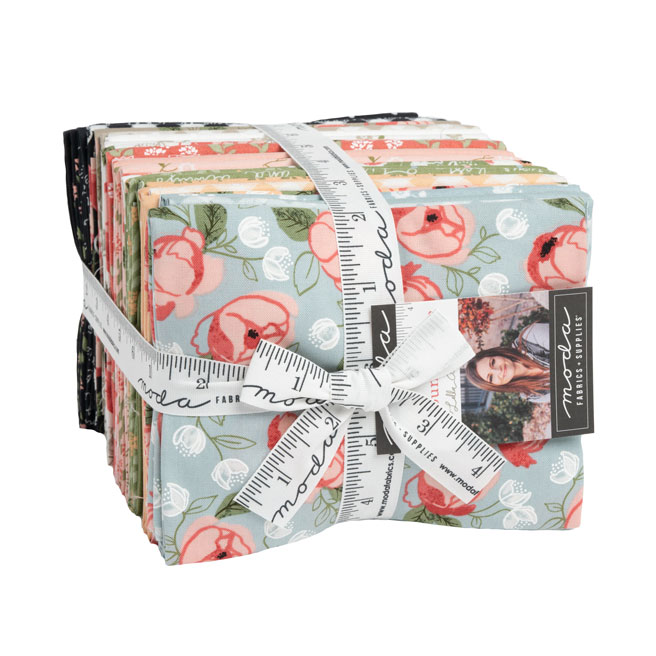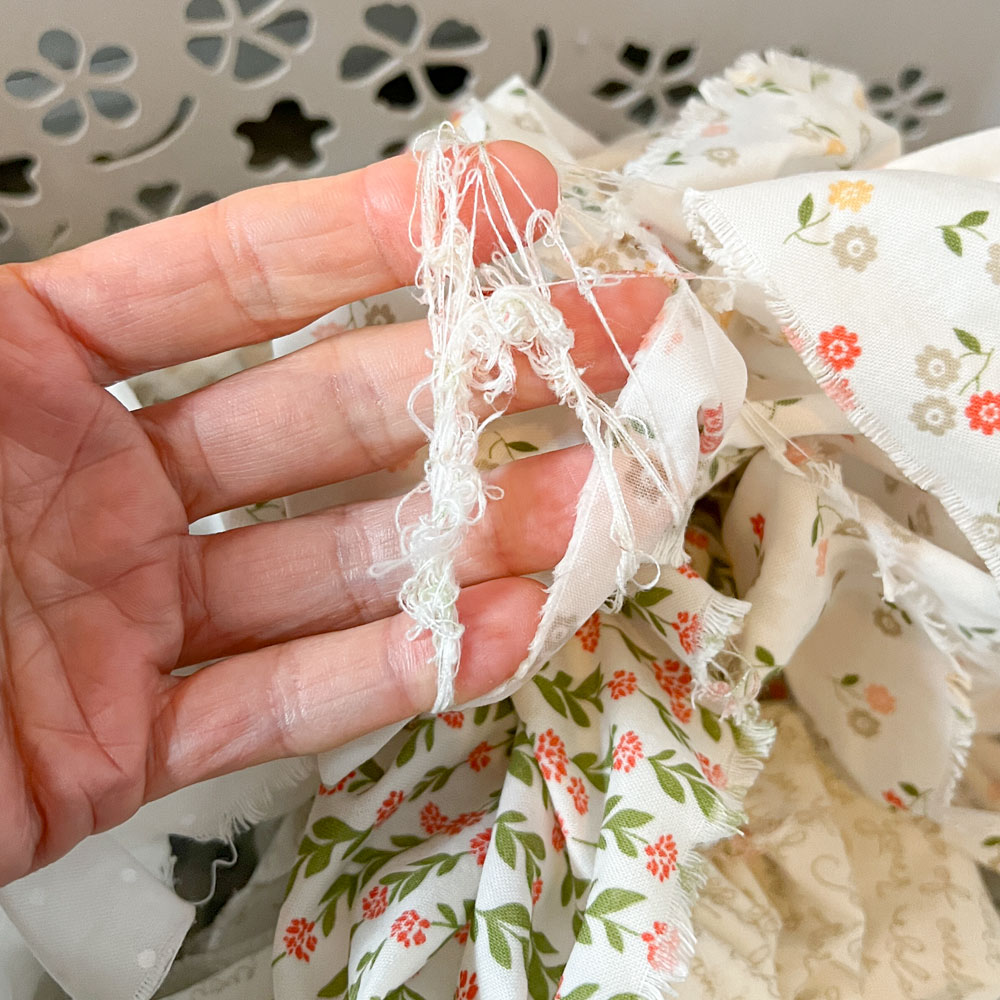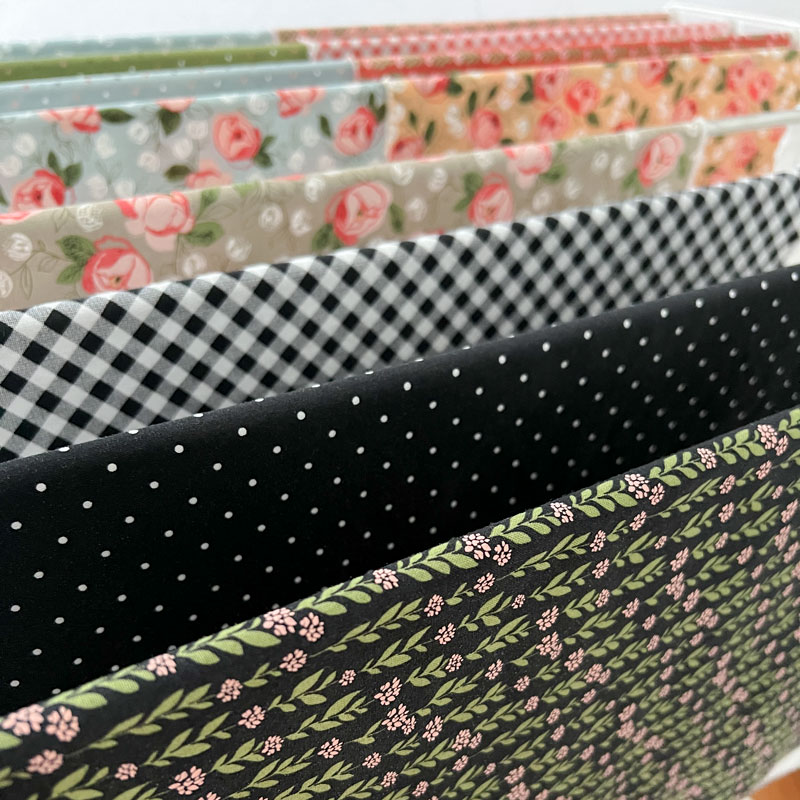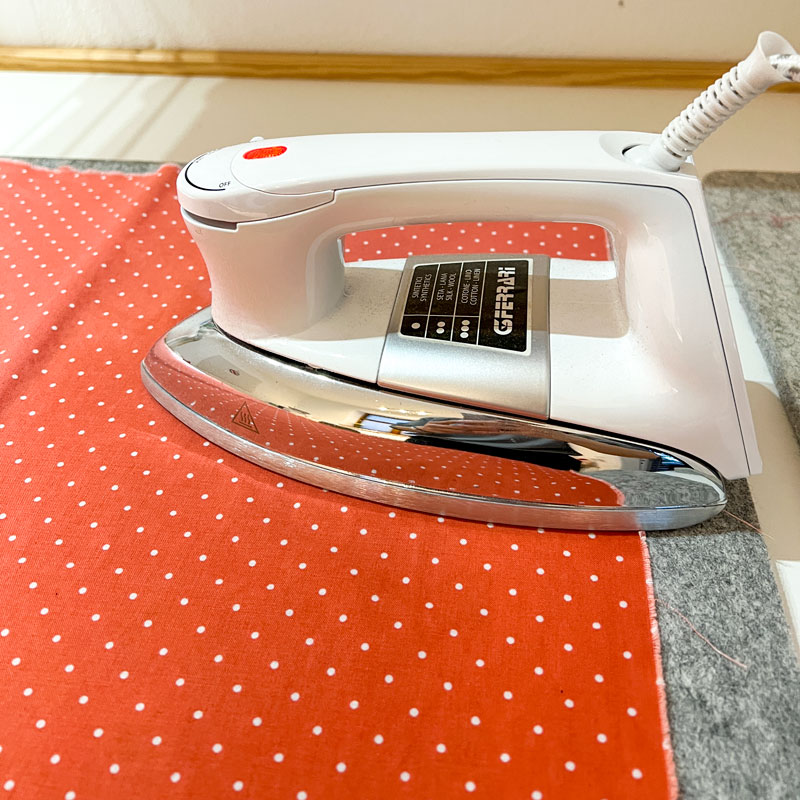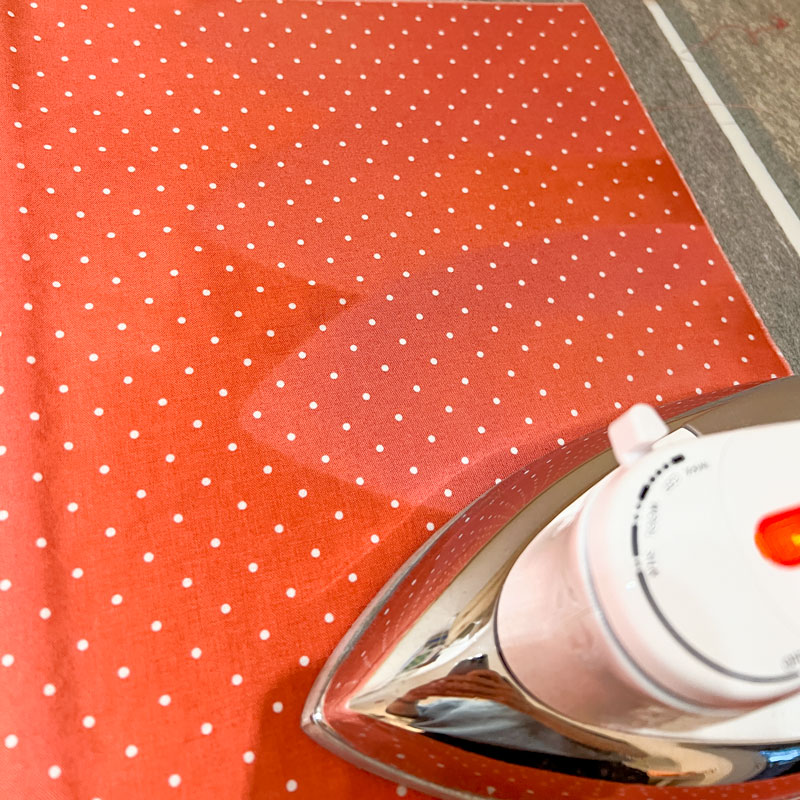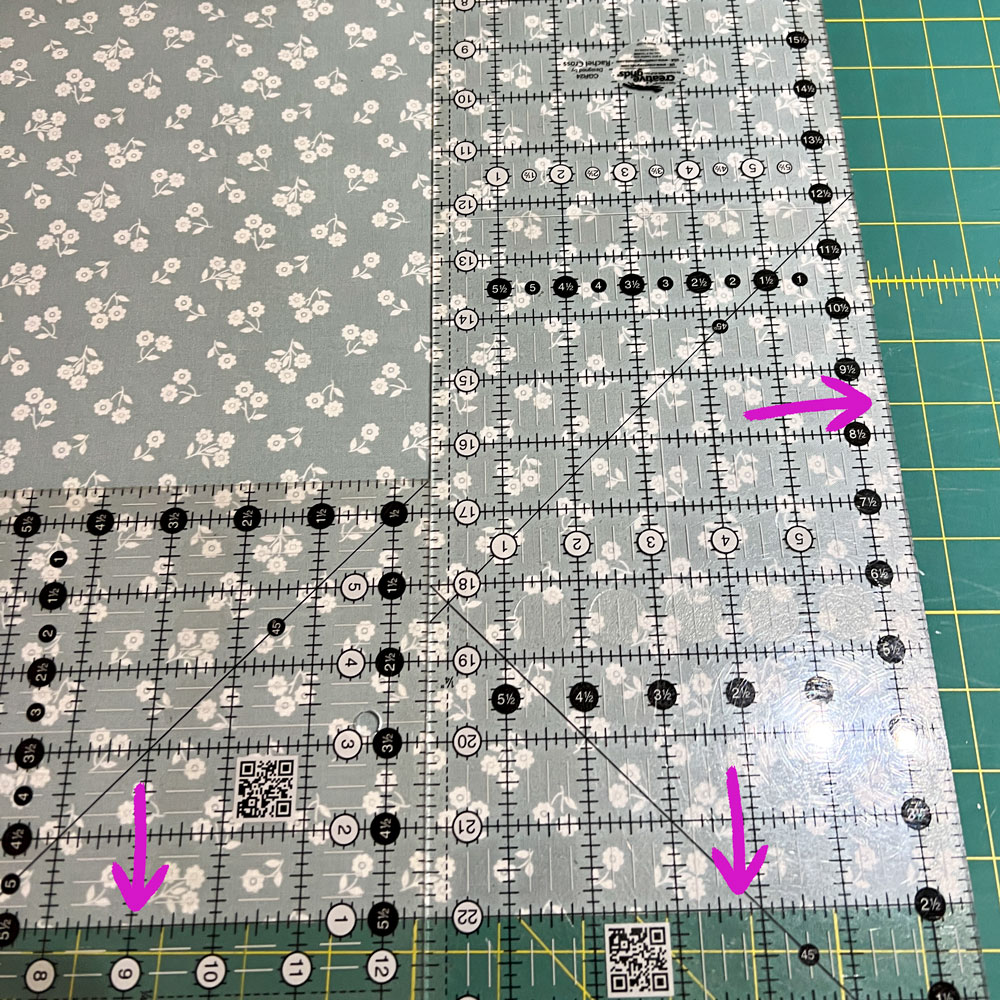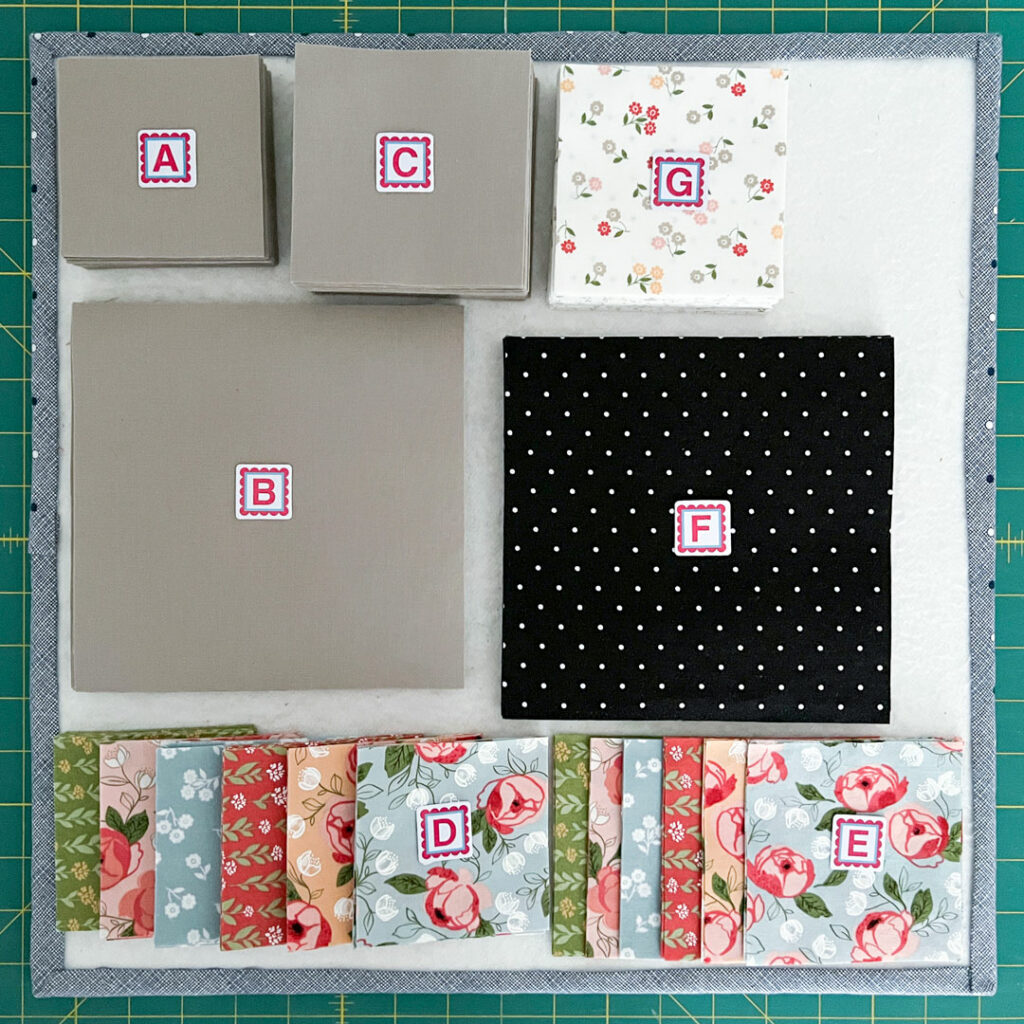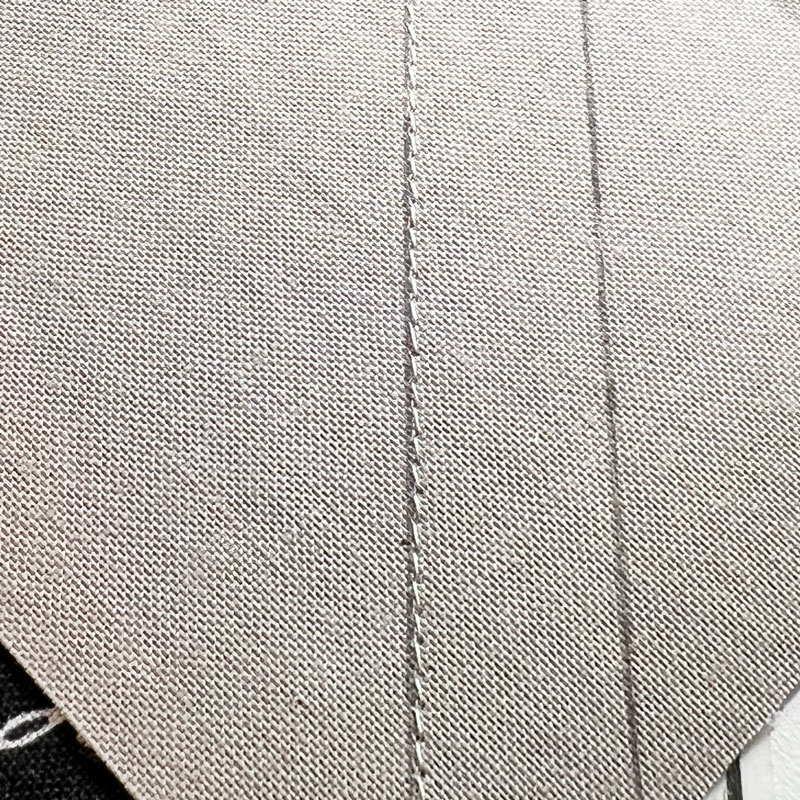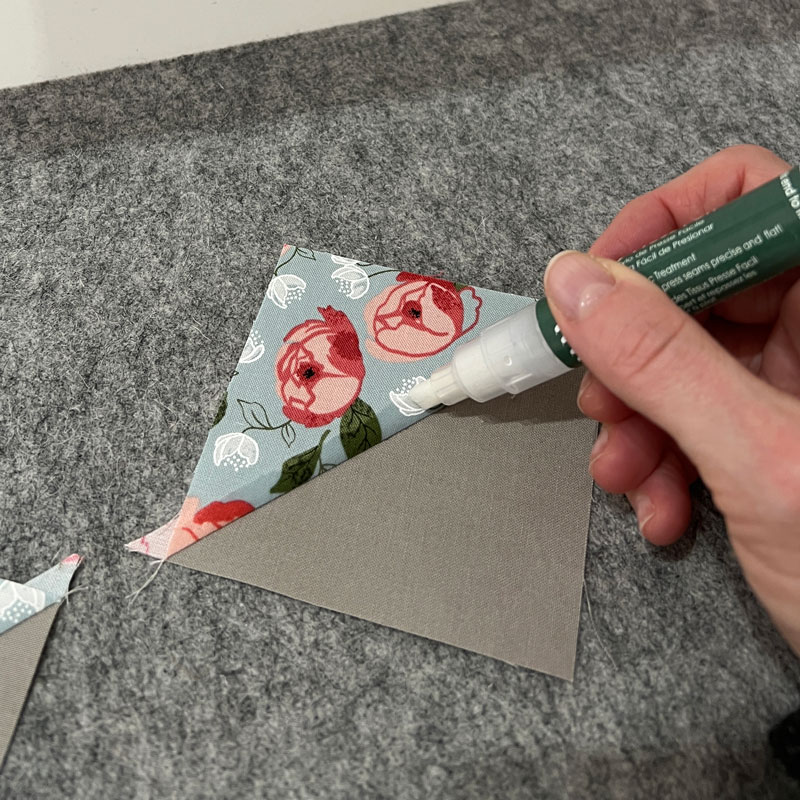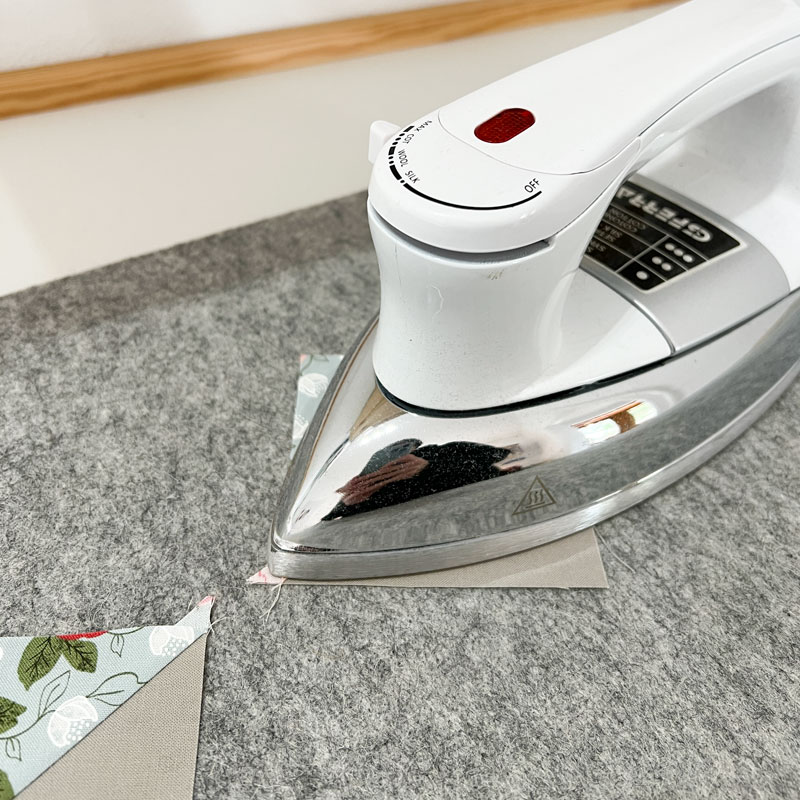Do you admire perfect seam intersections in quilts and want to improve your skills? Then be sure to read on!
Precise sewing in patchwork – what it’s all about
Shelley Scott-Tobisch is an American quilter who has developed her own modular system for accurate sewing in patchwork to help us achieve more accurate sewing results. She explains this system in her book “ Easy Precision Piecing “, from which I would like to present various (not all) steps here. At this point I ask for your understanding that I cannot reveal any details, because that would not be fair to Shelley. But I have the book in the store, as well as the Glue which she uses for sewing without pins.
For whom is the system suitable?
According to the author, the book is suitable for both beginners and advanced sewers – this is of course true, but I think that you should have sewn patchwork for at least a while, because otherwise you may not be familiar with the basics, such as the technique of “nesting seams”. I also think that a healthy ambition to improve one’s own sewing result should have set in, since this book is not about patchwork patterns after all and one might then quickly lose interest in it – although there are also some nice projects included that are certainly worth reworking …. but look for yourself 🙂
My project
Anja Seebald and I have developed a new pattern (soon available on etsy at CandyQuiltConnection ) that we will now sew in parallel once from front to back. I took this as an opportunity to improve my precision skills. To be clear here, I am by no means striving for perfection, but I always want to achieve 95%, because sloppy seam intersections make me unhappy.
I just finished my Tartan quilt but I can’t show it – the sashing has become too wonky, which wasn’t planned at first, but I sewed it to add a color accent. What can I say? I was impatient and cut quickly-quickly and sewed with hot needle. After that, I was so annoyed that I almost didn’t finish this project. But everything has its good, as you know, I have firmly resolved to sew the next project quite precisely!
To motivate myself, I treated myself to the Fat Quarter bundle from the collection “ Country Rose ” from Moda Fabrics:
The shock: pre-wash patchwork fabrics
Opinions differ on the question of whether or not to pre-wash patchwork fabrics. In any case, the overriding opinion is that you do not pre-wash. On the one hand, because the fabrics then become soft and are thus more difficult to sew, and on the other hand, because patchwork fabrics from reputable manufacturers are of such high quality that they neither shrink strongly nor bleed out (I can confirm this without reservation, I have once processed red and white fabrics together, not pre-washed and nothing bled out!).
So you should pre-wash patchwork fabrics? Of course not! At least I thought so far … Shelley Scott Tobisch wants me to do it, though, and I do want to try something new! Also, I’m often asked the question of whether or not pre-washing is useful, so it’s good to give it a try myself, right? The great thing is that the author explains exactly how to wash yardage and precuts, and how to set the washer and dryer. I am not allowed to reproduce here exact details from the book, but here I would like to show you a very important intermediate step:
I’m sure each of you knows this: after washing unsewn fabric edges, these fiber balls appear. Before you put the fabrics in the dryer, be sure to remove these balls so that the pieces of fabric are not crumpled together in the dryer, causing severe wrinkles. Here you can see my Fat Quarters after washing and before the tumble dryer cycle.
I carefully cut off all the balls.
After the tumble dryer – please be sure to keep an eye on the end of the program and remove the fabrics immediately! – I laid out the Fat Quarters smooth and removed more threads:
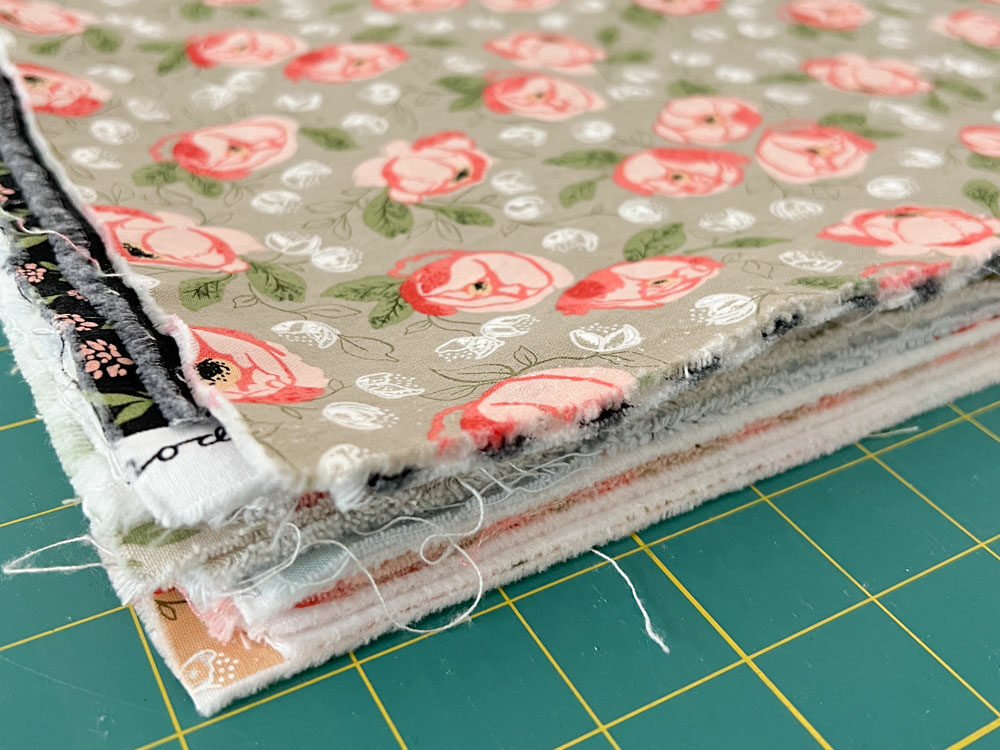
Hach, doesn’t it look great? Now the difference between unwashed and pre-washed fabric can already be clearly felt, because not only the chemical finish was removed by washing, also taken out the tension created during weaving and wrapping the bales of fabric! And, of course, this comes into play not during the sewing itself, but after the first wash.
Important: if you’re working from a pattern based on Layer Cakes or Charm Packs that requires the full measure of precuts, don’t prewash, because you’re guaranteed to run out of square afterwards. For example, a 10″ x 10″ piece becomes a 9¾” x 10¼” piece. etc.
The starching of the fabrics
You guys know I’m a big fan of starching patchwork fabrics, because spray starch gives the fabric a papery feel and a nice amount of stand. This allows much more accurate sewing, because the individual fibers are stiffened and no longer so soft. Especially when sewing e.g. Half-Square Triangles, Flying Geese or other blocks in the diagonal thread path, the strengths have proven themselves. Of course, starch is completely out after the first wash.
I have myself Spray starch from Sonett in the store, because this is absolutely residue-free and smells very natural. Shelley Scott-Tobisch also attaches immense importance to starching and confirms my previous praise of starching.
Previously, I always let starched fabrics dry completely overnight, but the author irons the fabrics dry. Since I’m rather wasteful than economical with spray starch, so the fabrics are relatively wet, I let them dry on for about an hour and then ironed them dry. However, I did not notice any difference between this and drying overnight and then ironing.
The ironing
When I got the book, I immediately opened the chapter on ironing and lo and behold, Shelley Scott-Tobisch specifically recommends ironing without steam in the sewing process. Yes! Me too! I was totally happy, because as many of you know, I have already written a blog post about it and many of you have bought the same iron as a result.
Dry ironing starched fabrics without steam is also very important, otherwise the wet fibers may warp. To do this, place the iron on one spot for 3 seconds, lift it and move it. This is how all fabrics are ironed. This process is very meditative and you can listen to a radio play or watch a video.
The cutting
Today we are going to cut the fabrics prepared in the previous steps according to the book “ Easy Precision Piecing “by Shelley Scott-Tobisch. I do use Fat Quarters and here it is clearly noticeable how the measurement of about 18″ x 22” changes with pre-washing, drying and starching. And this should be seen positively, because these changes then no longer have to go through the finished quilt!
Since I only need squares for Anja and I’s new quilt design, I first cut the Fat Quarters square on two edges. So far, I just trimmed an edge and then put a line of my ruler on that edge. However, Shelley convinced me that this is not enough to get an exact right angle – you need a second ruler, as you can see in this photo:
The exact seam allowance
In patchwork, accurate sewing is of great importance, because most of the time we work in blocks that we put together to form a large layout. If the individual blocks are sewn inaccurately, they will no longer fit into the chosen grid and the quilt top will become “wonky”, i.e. crooked and inaccurate in itself. Therefore, improving your technique is highly recommended for accurate results!
An essential part of this is keeping the seam allowance as accurate as possible. There are already plenty of videos on the Internet about the so-called Scant Seam, which explain very well how to adjust the sewing machine – take a look at the video by Brigitte Heitland, in which the topic is explained very clearly:
In addition, ironing always causes a touch to be lost, as the bend created by turning the seam allowance to the side also requires a millimeter of fabric. And this then lacks the exact measurement of a block. If a block now consists of very many parts, even a considerable dimension can be missing!
And this is how a Scant Seam looks sewn:
You can see that I sewed a hairsbreadth off the actual line.
The ironing technique for very flat blocks
Shelley Scott-Tobisch has developed a great tool, the Easy Press Pen , which helps us to iron blocks very flat. And this is how it works: the Easy Press Pen is used with Fabric Treatment or Starch filled.
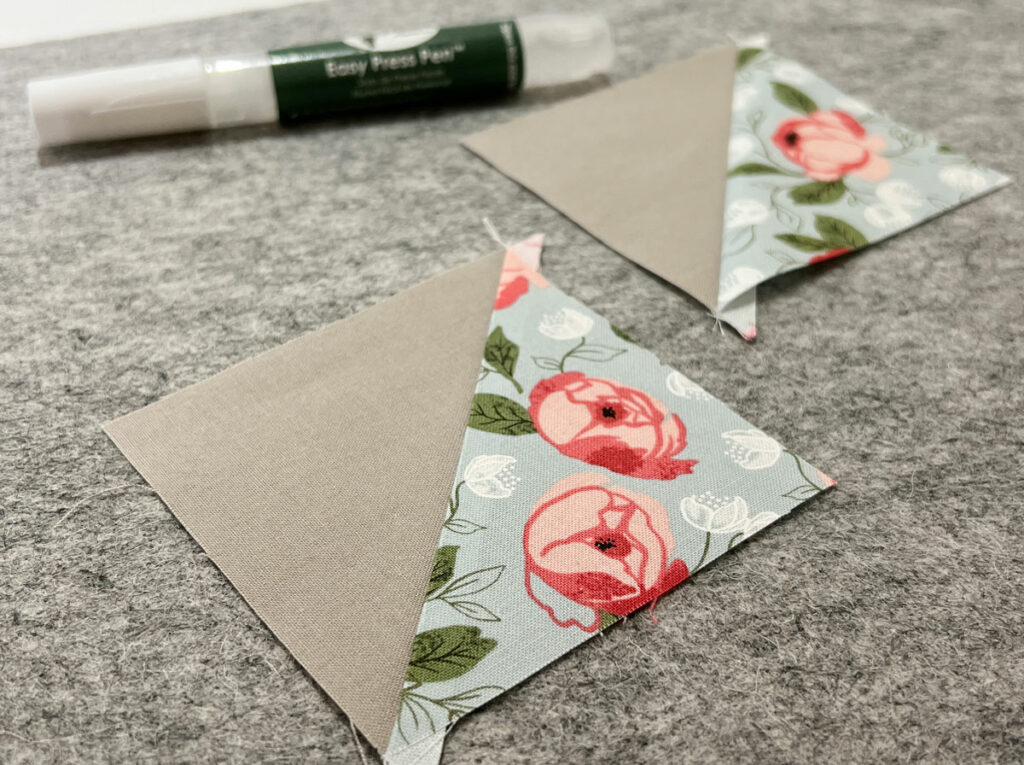
In the next step I will show you the so-called glue basting, i.e. working without pins and instead with glue.

